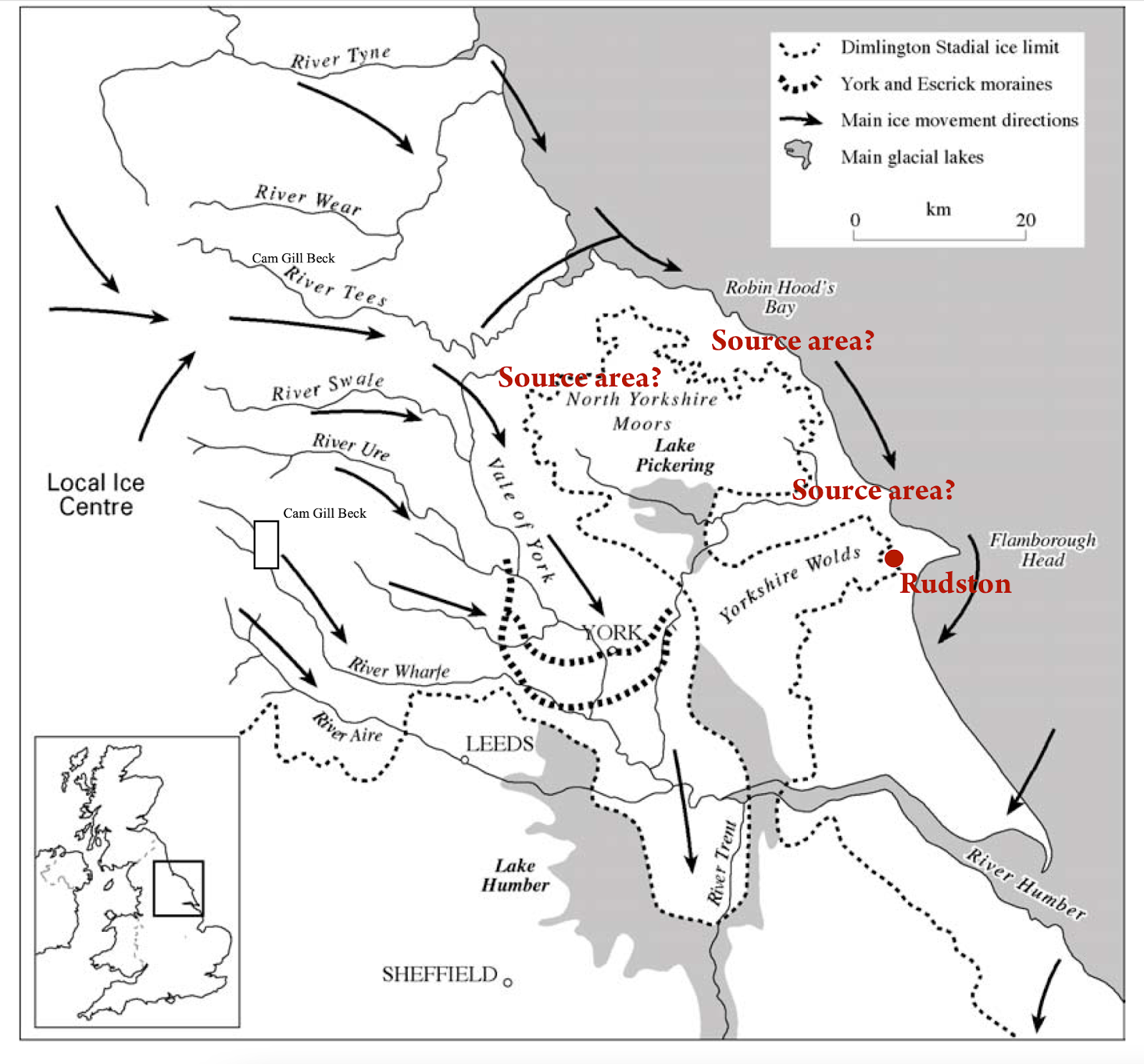From Paul Madgett:
Fairly recently a largish "erratic" in the form of a flint nodule came into my possession - see attached article I wrote for the North Devon Archaelogical Society's newsletter, and accompanying images. It is just possible that this might have been glacially transported? - but perhaps more likely represents an abandoned "Stone Age" raw material?
A PUZZLING OCCURRENCE OF A FLINT NODULE ON BAGGY POINT
Baggy Point is well-known for scatters of flint flakes and implements, mostly Mesolithic, but with a few from Neolithic and Bronze Ages, even one or two much more recent gun-flints (see “Croyde in my Lifetime”, John Lewis 2009, p.88). Another Croyde resident, David Maddocks, has recently given me a large flint nodule found in the stream bed north of Middleborough Hill. Occasional flint pebbles can be found on Baggy, usually showing signs of flaking, presumed to be from local beaches, but this is the only large nodule I have seen. Irregularly-shaped, size 20x18x14cm, it has a thin white cortex but with several broken surfaces showing the black core. Are these surfaces human-worked, or simply hit by an agricultural implement?
How did it reach Baggy?
Was it humanly transported many thousands of years ago, as much better knapping material than the local beach pebbles? Prehistoric flint-knapping is recorded for Orleigh Court, south of Bideford, using the flint nodules from the Tertiary-aged deposit there; see John Newberry "Inland Flint in Prehistoric Devon" Proc. Devon Archaeological Soc. No.60, 2002. Perhaps some “raw material” was brought to Baggy? But why then abandon such valuable material without obvious use?
Or perhaps it represents much more recent transport, as a “curio”? The Hyde family, who used to own most of Baggy, treated as “garden” the areas near their house, including the valley just upstream from the pond.
Or maybe a geology student decided the specimen in their rucksack was too heavy, so after a field day visiting various parts of Devon, this nodule was just “dumped”!
Is there a “natural” explanation?
The nearest land occurrence of Chalk containing flints is around Beer in S.E. Devon. Cretaceous sea-levels were far higher than at present, Chalk probably deposited across most of England; the Clay-with-Flints of southern England is considered to be a residual deposit from this, likewise the small Orleigh Court deposit.
Geological transport from either S.E. Devon or Orleigh Court does not seem feasible, but is the latter material just a final residuum from formerly much more extensive spreads, with isolated boulders and cobbles still scattered around the North Devon landscape? A large flint rather similar to this Baggy one was found by NDAS members a few years ago in a valley-bottom context at Holsworthy Farm near Parracombe. Perhaps both had a “residual” origin? Boulders lying around on any sloping ground would have been subjected to solifluction during the Ice Ages, so moved down-slope to valley bottoms (cf. the concentration of Sarsen boulders in Piggle Dene, Marlborough Downs).
There are further potential geological sources offshore: e.g. the Stanley Bank Basin near Lundy – see Cope, J.C.W. 2007. “A new Tertiary basin in North Devon — a progress report”; Geoscience in south-west England, 11, 338-341. This is thought to be of a similar age to, but much larger than the Petrockstow and Bovey Tracey Basins, and being post-Cretaceous is likely to include flints.
Further offshore, beyond Lundy, the Chalk itself outcrops on the sea-bed, flint nodules could have been eroded from this. Reconstructions of former ice-sheets and their movements indicate that such material could have been glacially-transported to the North Devon coast. Several such non-local / far-travelled “erratic” boulders have been found at high-level on Baggy in recent decades; most easily explained by an over-riding ice-sheet. Could this particular flint nodule have been emplaced by this mechanism? However, this seems less plausible for the Parracombe flint.
Further suggestions?
Paul Madgett, Braunton; 03-05-2020.













































